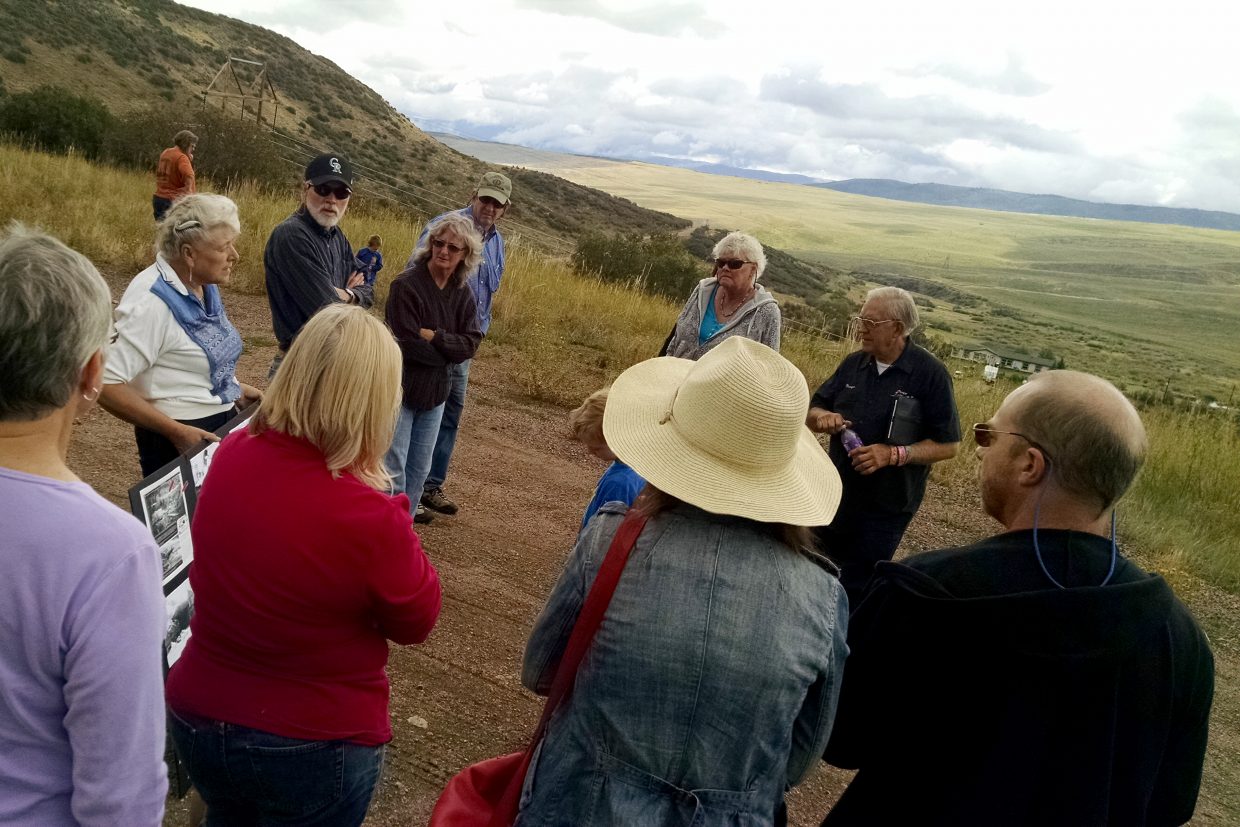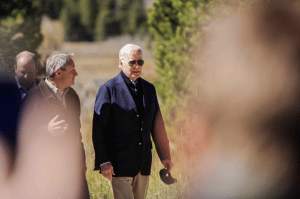James Garcia: Oak Creek mine tours enrich newcomer’s understanding of area

083114_Mine_Tour
Oak Creek — I awoke Sunday morning after another late night on the copy desk. My alarm sounded and my eyes opened, but my brain was still sleeping. Where was I? What was this strange place?
I’d only been in Routt County — at nearly 7,000 feet — for little more than a week, and my early morning mind hadn’t come to terms with those facts quite yet. But Labor Day weekend was upon us, and it was time to get acquainted with my new home.
I live in Oak Creek, a tiny hamlet south of Steamboat Springs, which seems to be an enclave of laid-back folks, spanning multiple generations of people looking for a quieter life away from the hustle and bustle of larger cities.
Perhaps one of the best ways to learn about a new place, especially one with such an obviously unique disposition as Oak Creek, is to immerse one’s self in the past — to investigate the humble beginnings of a place with such a rich history.
Each year during the Labor Day weekend, the Historical Society of Oak Creek and Phippsburg offers free bus tours to take visitors and curious residents to spots along the winding mountain roads where the coal industry once flourished. And I thought this would be a perfect way to explore my new home.
It’s no secret many mountain towns were formed under similar conditions, but Oak Creek, incorporated in 1907, was once the happening place in Routt County and was considered for the county seat at one point, having the largest population in the area with about 1,800 people, four hospitals and 29 languages spoken among its populace.
“There’s hardly a hill or a crest or crevice that doesn’t have history with the mining. You can’t leave Oak Creek without seeing something connected to the mines,” said Linda Long, society volunteer and Sunday’s 10 a.m. tour leader.
There was a large gathering Sunday morning — a turnout that surprised Long and the other society members. An average Labor Day tour typically attracts about 10 to 12 folks loaded onto a small bus, but those interested in this year’s tour would not fit on the bus and had to follow behind — a situation I found myself in, despite my coffee-fueled attempt to meet at the Tracks and Trails Museum in a timely manner. The noon tour saw upward of 20 to 30 people who wanted to learn about the mines in South Routt.
Our first roadside stop was along Routt County Road 27, also known as Twentymile Road, to see the now-nonexistent Argo Mine, which once produced coal for the Moffat Coal Co. until an explosion in 1926 killed five men. The site became a dumping ground, where rusted cars and barrels now lie at the bottom of the steep drop-off over the side of the road. The county closed the area to dumping in the early 1970s when it was discovered that water ran through the bottom of the hill. The only thing remaining of the original mine is a single smokestack, barely visible from the road.
Next up was the Edna Mine, which operated from the 1890s to 1945. The mine was a wagon mine, where the coal was shipped into town via horse-powered wagons and unloaded by hand into the tipple near the center of Oak Creek. The Blue Spruce Mine, which operated from 1927 to 1948, produced 5,199 tons of coal, which was extracted by pick and shovel by men working on their hands and knees in mines not tall enough to stand in — all for 35 cents per ton. In its entire 21-year existence, the mine made roughly $1,820.
“I can’t imagine the conditions the men had to mine in,” Long said. “You have to admire them for their labor.”
Driving along a dirt road that traces Trout Creek, we came upon the site of the Apex Mine, which unlike the previous mines was a bit larger in its production capabilities. It was purchased by a larger coal company and had its own tipple. The mine was closed in 1986 because the company could not maintain some of the safety regulations, which required the mines to have adequate air shafts in place and having mine shafts tall enough to stand in.
Five houses from that time, when mining families resided in the area outside Oak Creek, still remain standing. The houses were built for about $150 each in 1917. Long currently lives in a house that was created by combining two of the original 1917 structures.
The Edna Mine was a larger strip-mining operation that functioned from 1945 to 1995. Massive buckets were dragged by cranes across the ground to uncover coal veins beneath the earth. One of the buckets, and not the largest of them, can be seen on display outside the museum in Oak Creek. The mine, once one of the largest contributors to the nation’s overall coal supply, since has undergone reclamation and still is owned by P&M Coal. Nearby, Twentymile Mine, owned by Peabody Energy, is still one of the major suppliers of coal in Colorado.
One wonders what would have become of the popular mountain towns without the coal industry. Would Steamboat Springs be the popular tourist destination it is today? Would Oak Creek exist at all? And to put into perspective the early coal days and those who labored in harsh conditions, Long reminded those on the tour that all the area’s coal mines produced in 20 years roughly what is produced in one eight-hour shift at a modern mine, such as Twentymile.
“The struggles they had to develop this country is just amazing,” Long said.
The experience enriched my appreciation for the area, and this year, my Labor Day hot dogs, craft beers and sentiments were dedicated to the mine workers who forged Oak Creek’s fascinating history.

Support Local Journalism

Support Local Journalism
Readers around Steamboat and Routt County make the Steamboat Pilot & Today’s work possible. Your financial contribution supports our efforts to deliver quality, locally relevant journalism.
Now more than ever, your support is critical to help us keep our community informed about the evolving coronavirus pandemic and the impact it is having locally. Every contribution, however large or small, will make a difference.
Each donation will be used exclusively for the development and creation of increased news coverage.









